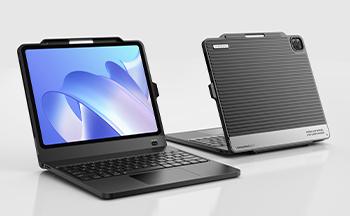If you want to show hidden files on Mac, you’re in the right place! macOS hides certain files and folders by default to keep your desktop tidy and protect important system data.
But sometimes you need to see these hidden files—maybe to troubleshoot an issue, organize your storage, or find important app data. Luckily, there’s a simple keyboard shortcut.
Learning how to show hidden files on Mac gives you more control and helps you see everything stored on your device. Read on to learn how.
How To Show Hidden Files on Mac

To see hidden files on your Mac, press Command + Shift + Period (.) while in Finder—this will instantly show or hide hidden files and folders.
You can also use Terminal by entering the command defaults write com.apple.finder AppleShowAllFiles TRUE; killall Finder to make hidden files appear.
To hide them again, just use defaults write com.apple.finder AppleShowAllFiles FALSE; killall Finder. Both methods let you quickly switch hidden files on or off whenever you need.
What Are Hidden Files on Mac and Why Are They Hidden?
Hidden files are files and folders that macOS does not show by default in Finder. You’ll spot them by their dot (.) at the start of the filename, like .bash_profile or .DS_Store.
Apple hides these files to protect important system data. If you change or delete the wrong one, your Mac might start acting up.
For example, system files in the Macintosh HD or Home folder stay hidden to prevent accidental editing or deleting. Hiding files also keeps your folders looking clean.
Most users never need to see or mess with configuration files, so macOS just tucks them out of sight unless you ask otherwise. The Library folder (~/Library) is probably the most famous hidden folder on Mac.
Sometimes you need to see these files—maybe you’re troubleshooting, customizing settings, or trying to clean up disk space. Knowing what’s hidden can help you track down settings or data that might otherwise seem missing.
Quick Keyboard Shortcut to Show Hidden Files on Mac
You can reveal or hide hidden files with a really simple keyboard shortcut in Finder. It’s the fastest way, and you don’t need any extra apps or complicated commands.
To show or hide hidden files:
- Open Finder.
- Go to any folder, like Macintosh HD or your Home folder.
- Press Command + Shift + Period (.).
Hidden files and folders pop up, looking a bit faded compared to the regular stuff. Hit the same keys again, and they vanish.
This shortcut works on macOS Sierra (10.12) and anything newer. It’s good in any Finder window, even on external drives or network shares.
You’ll see both system files and app-specific folders, like .Trash or .config when you use this trick. If it doesn’t work, check that your macOS is updated.
Don’t worry—this method doesn’t make any lasting changes. When you close Finder or toggle the shortcut off, the hidden files disappear again.
How to Show Hidden Files on Mac Using Finder
Finder supports viewing hidden files with the shortcut above. If you want, you can also use Finder menus and a few navigation tricks to get to popular hidden spots.
To access the hidden Library folder in your Home folder, try this:
- Open Finder. In the menu bar, pick Go > Go to Folder...
- Type ~/Library and press Return.
- The Library folder opens up, showing files that are usually hidden.
To browse anywhere else, just press Command + Shift + Period (.) in any Finder window. Hidden items show up mixed among your usual files.
You can drag the Library folder to the Finder sidebar if you want quick access next time. That’s a little hack I use a lot.
Some third-party file manager apps, like Commander One or ForkLift, offer more options for seeing and managing hidden files if you want more control.
Note: If you edit or delete hidden files from Finder, you might mess up your system or programs. Only change files if you’re sure what they do—it’s easy to break things by accident.
How to Reveal Hidden Files on Mac With Terminal Commands
If you want more control, use Terminal. Terminal lets you make hidden files visible everywhere, not just in Finder.
Here’s how you do it:
-
Open the Terminal app (find it in Applications > Utilities).
Type this command to show hidden files:
defaults write com.apple.finder AppleShowAllFiles YES
killall Finder
-
Finder reloads, and now you see hidden files everywhere.
If you want to hide them again, run:
defaults write com.apple.finder AppleShowAllFiles NO
killall Finder
These commands change a macOS setting and restart Finder, so the change takes effect. If you want to hide or unhide just one file or folder, use the chflags hidden or chflags nohidden commands in Terminal.
For example:
- To hide a file: chflags hidden filename
- To unhide a file: chflags nohidden filename
Terminal’s powerful, but it’s also risky—one wrong move and you can mess with important files or expose private stuff. Just be careful, yeah?
How to Hide Files and Folders Again on Mac
After you’re done poking around hidden files, you might want to hide them again to keep Finder less cluttered. How you do this depends on how you revealed them in the first place.
If you used the keyboard shortcut (Command + Shift + Period), just hit it again in Finder and the files will hide themselves.
If you used Terminal, run:
defaults write com.apple.finder AppleShowAllFiles NO
killall Finder
To hide a specific file or folder with Terminal, use:
chflags hidden [file or folder path]
Examples:
- chflags hidden ~/Documents/Secret.txt
- chflags hidden /Users/[yourname]/Desktop/private_folder
Once you hide them, those files disappear from Finder, but you can still get to them using Terminal or by showing all files again. Hide stuff carefully—especially system or configuration files. If you accidentally hide something important, it can be a pain to find it later.
Accessing the Library Folder and Other Hidden Locations
The Library folder inside your Home directory stores app settings, preferences, and support files. macOS hides it by default to keep people from accidentally changing things they shouldn’t.
To open it:
- In Finder, click Go in the menu bar while holding the Option key.
- The Library option shows up in the menu; click it to open.
You can also open the Library folder by using Go > Go to Folder and typing ~/Library.
For other hidden spots, try Finder’s Go to Folder… feature. Here are a few common hidden paths:
- /private
- /usr
- /etc
- .Trash in your Home folder
Just copy and paste these into the Go to Folder box. But be careful—lots of these directories are critical to macOS. Don’t mess with them unless you’re sure you know what you’re doing.
Tips and Warnings When Viewing Hidden Files on Mac
- Only edit hidden files if you know what they do. Messing with the wrong file can break your system or lose data.
- Always keep a backup of your Mac before changing system files or configuration folders.
- Some hidden files are essential for apps or macOS. Remove the wrong one, and you might regret it.
- Be careful with Terminal. Typos or mistakes can hide important files or reveal things you didn’t mean to.
- Don’t move hidden folders from system locations, especially in Macintosh HD and the Library folder.
If you mess up hidden files, it’s not always easy to fix. If something goes sideways, restore from Time Machine or another backup if you have one.
Common Issues When Trying to Show Hidden Files on Mac
Shortcut not working: The keyboard shortcut (Command + Shift + Period) only works in Finder on macOS Sierra or newer. If it’s not working, check your macOS version.
Terminal commands don’t do anything: Double-check your command for typos and make sure you restart Finder with killall Finder. Even a tiny typo in AppleShowAllFiles or the path can break things.
Access denied: Some system folders and files need admin privileges. You might have to use sudo in Terminal or change folder permissions.
Hidden files vanish after restart: That’s normal if you use the shortcut method. To make it stick, use the Terminal command (defaults write ...).
Files still stay hidden: Some apps hide files their own way. Third-party file managers or tools might help, but always stick to trusted software like Commander One or ForkLift.
Conclusion

Showing hidden files on Mac is simple once you know the right shortcuts and tools. Whether you use a keyboard shortcut, Finder, or Terminal, you can quickly access files that are usually out of sight. This is handy for troubleshooting, organizing, or finding system files.
Just remember to be careful when working with hidden files, as they often belong to important system settings. Now you know how to show hidden files on Mac, you can easily find what you need—just don’t forget to hide them again when you’re done!
Frequently Asked Questions
How do I find hidden Library files on Mac?
Open Finder. Hold the Option key, then click the Go menu and pick Library from the list.
This gives you access to settings, app data, and other files that macOS usually keeps hidden for safety.
How do I view hidden files?
Press Command + Shift + Period (. ) in Finder to show or hide hidden files. This shortcut reveals anything starting with a dot or marked as hidden.
Tap the same keys again to hide them.
How do I see all files on my Mac?
Open Finder, pick your main drive under Locations, and use the shortcut Command + Shift + Period to make hidden files appear.
If you like the Terminal, type ls -a to list everything, including hidden files, in any folder.
How to access a private folder on a Mac?
If you need into a private or locked folder, you’ll need the right permissions or a password. Right-click and choose Get Info to check or tweak permissions.
For hidden private folders, turn on hidden file visibility first. If you still can’t get in, you’ll probably need an admin account.
How do I see hidden files on my Mac?
Open Finder and hit Command + Shift + Period to quickly show or hide hidden files. This works in most places and is honestly the easiest way.
If you want them visible all the time, run defaults write com.apple.finder AppleShowAllFiles TRUE in Terminal, then killall Finder to refresh.
How do I find unwanted files on my Mac?
Pop open Finder and head to Finder > Recents to check out files you've touched lately. You can sort them by size or date if you're hunting for big or ancient stuff you might want to toss.
Hit up Storage Management through the Apple menu ( > About This Mac > Storage > Manage). That'll help you spot unused files, downloads, or apps so you can clear out some space.
If you're feeling adventurous, third-party cleaning apps can dig up hidden junk files too. Sometimes they find things you didn't even know were lurking.
















